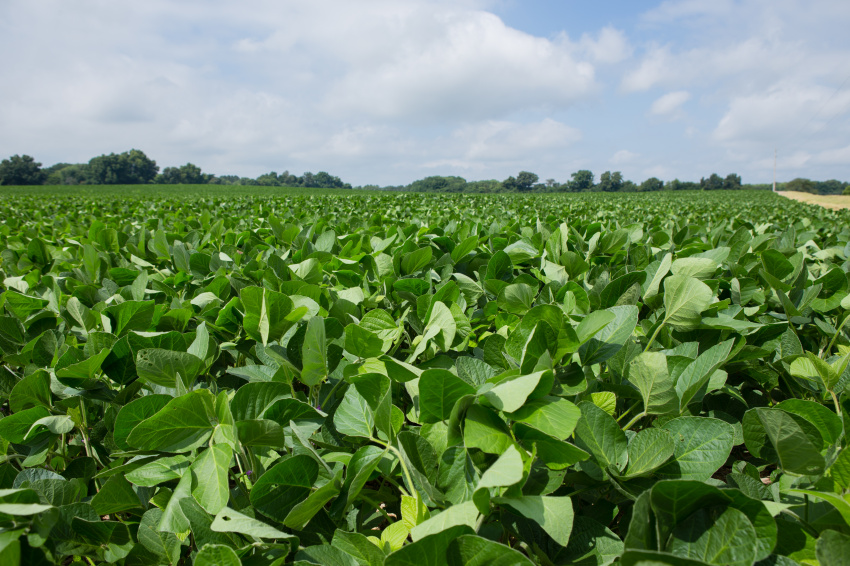Protein Plays an Essential Role in Global Nutrition

U.S. Soy panel at World Food Prize unveils Protein First approach and the opportunity for animal- and plant-based protein to collaboratively nourish a growing population.
DES MOINES, Iowa (October 16, 2019) — By 2050, the world population will reach an estimated 9 billion people, creating demand for protein that is much higher than it is today. To nourish society as a whole, U.S. Soy, in concert with animal agriculture, plays an important role in global food security by offering a reliable supply of high-quality protein. Together, it’s a powerful source of nutrition to fuel our population and economic growth.
This week at the Borlaug Dialogue International Symposium, as part of the World Food Prize, the United Soybean Board (USB) joins the American Soybean Association (ASA), Iowa Soybean Association and World Initiative for Soy in Human Health (WISHH) to discuss U.S. Soy’s commitment to global food security. A major part of nourishing our global society is prioritizing protein on everybody’s plate. Whether it’s animal or plant protein, high-quality and nutrient-dense protein works better collaboratively than it does separately.
“In the grand scheme of things, when all proteins are part of a balanced diet and work collaboratively to nourish the world, everyone wins,” says Polly Ruhland, CEO of the United Soybean Board. “Collaboration between animal- and plant-based proteins bolsters our ability to serve our shared global protein market. Together we can answer the many critical challenges facing our world: nourished versus malnourished, environmental improvement versus degradation, confident customers versus doubtful ones.”
In addition to animal protein, U.S. soy will be pivotal to these efforts. Soy as a complete plant protein, containing an adequate proportion of each of the nine essential amino acids necessary in the human diet, serves not only as a primary source for high-quality animal feed, but also a growing direct source of protein for people.
“Thanks to the visionary soybean farmers who founded WISHH 20 years ago, U.S. soybean growers have real-world experience in connecting trade and development in Africa, Asia and Central America,” says Liz Hare, WISHH executive director. “Together with our strategic partners, we ensure that more protein reaches these growing populations through nutritious and delicious foods ranging from soy inside tortillas and bread to feed for fish, poultry and livestock.”
U.S. soybean farmers play a critical role in providing a sustainable protein with the growing population. As a pledge of stewardship to the air, water and soil, farmers representing the United Soybean Board, American Soybean Association and U.S. Soybean Export Council committed to goals for improvements on four key metrics between 2000 and 2025. These goals include a reduction in soil erosion by 25%, as noted in the Soybean Sustainability Assurance Protocol, in addition to improvements related to greenhouse gas emissions, land use and energy use.
“Our commitment to feed the world in a nutritious and sustainable manner is taken very seriously and is of intrinsic importance to all U.S. soybean farmers,” says John Heisdorffer, ASA chairman and Iowa farmer. “Soy is part of the larger solution to nourish our population.”
About the United Soybean Board: USB’s 73 farmer-directors work on behalf of all U.S. soybean farmers to achieve maximum value for their soy checkoff investments. These volunteers invest and leverage checkoff funds in programs and partnerships to drive soybean innovation beyond the bushel and increase preference for U.S. soy. That preference is based on U.S. soybean meal and oil quality and the sustainability of U.S. soybean farmers. As stipulated in the federal Soybean Promotion, Research and Consumer Information Act, the USDA Agricultural Marketing Service has oversight responsibilities for USB and the soy checkoff. For more information on the United Soybean Board, visit unitedsoybean.org.
About the American Soybean Association: The American Soybean Association represents U.S. soybean farmers on domestic and international policy issues important to the soybean industry. ASA has 26 affiliated state associations representing 30 soybean-producing states and more than 300,000 soybean farmers. Learn more at soygrowers.com.
About the World Initiative for Soy in Human Health: ASA/WISHH connects trade and development. As a trailblazer for trade, WISHH grows markets for U.S. soy farmers and, at the same time, improves lives and economic opportunities in developing countries. WISHH works with international companies and organizations that purchase U.S. soy. These buyers invest thousands of their own dollars to research and promote soy-based foods and feeds made with U.S. soy in emerging markets. Learn more at wishh.org.
About the Iowa Soybean Association: The Iowa Soybean Association implements programs and activities improving the competitiveness of the soybean industry to the benefit of Iowa’s more than 40,000 soybean farmers. Priorities include production research, market development, environmental programming, communications, policy, producer services, consumer engagement and transportation. The association, founded in 1964, located in Ankeny, Iowa, and governed by an elected, volunteer board of 22 soybean farmers, is funded by the soybean checkoff and non-checkoff resources. It is fact-based and data driven, dedicated to honesty and transparency and committed to sustaining a strong and vibrant soybean industry through collaboration and partnerships. Learn more at iasoybeans.com.
###
Media Contacts:
Paul Murphy-Spooner at United Soybean Board, 636-681-1254
Mace Thornton at United Soybean Board, 636-681-1263
© 2019 United Soybean Board. All Rights Reserved. [58501-CB]
